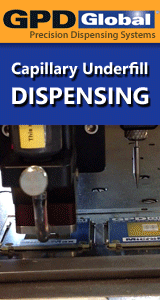Printed Circuit Board Assembly & PCB Design Forum
SMT electronics assembly manufacturing forum.
- SMTnet
- »
- Electronics Forum
- »
- Rigid - Flex Depanelising
Rigid - Flex Depanelising
Views: 2424
![]() Has anybody had experience in depanelising Rigid-Flex pcbs? ...
- Jan 06, 2016
by
leeg
Has anybody had experience in depanelising Rigid-Flex pcbs? ...
- Jan 06, 2016
by
leeg
![]()
![]()
![]() I've done more if this that you can possibly imagine. I've ...
- Jan 06, 2016
by
SWAG
I've done more if this that you can possibly imagine. I've ...
- Jan 06, 2016
by
SWAG
![]()
![]() What SWAG said.
We use a PCB Router exclusively for rigid...
- Jan 07, 2016
by
Hegemon
What SWAG said.
We use a PCB Router exclusively for rigid...
- Jan 07, 2016
by
Hegemon
![]()
![]() Very cool - we're looking at 3D, too. I spend so much time ...
- Jan 12, 2016
by
SWAG
Very cool - we're looking at 3D, too. I spend so much time ...
- Jan 12, 2016
by
SWAG
- SMTnet
- »
- Electronics Forum
- »
- Rigid - Flex Depanelising







